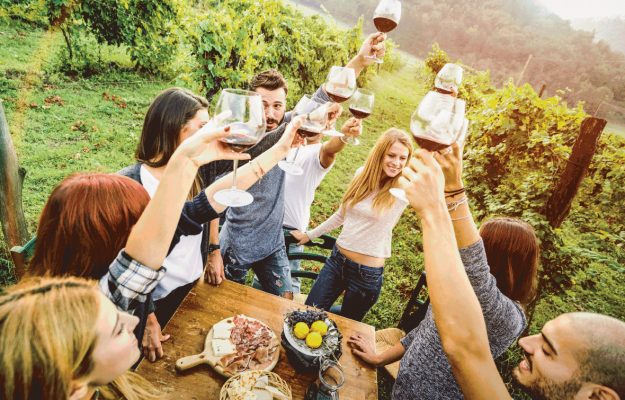Tourists are looking for variety, they are no longer satisfied with the traditional tasting proposals, but they want to experience local food and wine in all its facets according to their tastes and needs, as revealed by the latest survey signed by Roberta Garibaldi, professor of Tourism Management at the University of Bergamo and president of the Italian Association of Food and Wine Tourism. Psycho-culinary profiles are the set of expectations, tastes and personal needs towards food and wine proposals while traveling. Every tourist tends to identify himself/herself in a predominant profile and in 43% of cases it is the eclectic one, that is the one who makes the variety of the offer an essential prerogative in travels. This profile is the most widespread among travelers from Canada, the United States, Mexico, China and the United Kingdom; only among the French does the theme of authenticity prevail. The eclectic profile cuts across generations, with 53% of Boomers, 45% of Generation X, 38% of Millennials and 37% of Generation Z, as well as genders, with 42% of women and 41% of men. This desire to search and live different food and wine experiences is also confirmed by the actual behavior: foreign tourists participated on average to 3.9 different types of proposals during the journeys made in the last two years, a value which increases to 4.7 considering those who traveled with the primary motivation of food and wine.
Italians are eclectic with 85% of them stating they participated in five or more experiences, showing the strong desire to discover and experience local food and wine in all its facets. Among the most popular proposals there are, besides tasting typical products, visiting a market and going to historical bars and restaurants. Great interest is aroused by the experiences of visiting production places, especially in farms which register a higher interest rate than wineries. There is interest in trying dishes from cuisines other than the local ones, with 58% going to ethnic restaurants, however this is less interest than foreign tourists. This is also because the food and wine tourism of Italians is mainly domestic, and the richness and variety of the regional food and wine panorama is such that it overshadows the desire for foreign cuisines.
Tourists do not look for variety in the proposals alone, but also in cuisine, no matter the destination they are visiting. Almost 7 tourists out of 10 would like to try dishes of different culinary traditions even if the destination is renowned for one in particular and among food and wine tourists the number is even higher, rising to 81%. This does not mean putting in second place the specialties of the place, which have always been a strong incentive to go to a specific location, but tourists love experiences of every kind. For example, 48% of those who have bought food from a food truck have also eaten in gourmet restaurants and vice versa. This eclecticism also translates into a greater desire to combine other activities with food and wine experiences. Travelers look for proposals integrated with cultural and recreational activities, first of all the visit to cultural attractions (indicated by 85% of food and wine tourists and 72% of general tourists) and shopping (respectively 85% and 68%).
Will this trend toward eclecticism and the search for a plurality of experiences continue to grow, despite the restrictions related to the Covid-19 pandemic? In 2020, food and wine tourism was able to maintain its appeal as the desire to discover local food and cuisine grew stronger. During the spring lockdown, the share of time dedicated by Italians to the online fruition of food-related content had grown, especially among Millennials and Generation X (GFK Sinottica data), as well as their desire to travel outdoors and enjoy food and wine experiences when regional borders reopen (Confturismo-Swg survey). This propensity was then effectively translated into the search for and enjoyment of thematic proposals during the summer season, both by generalist and food and wine tourists.
“About 50% of food and wine travel lovers are “omnivores”: during their vacations they want to live a variegated set of enriching experiences and food and wine, already multisensorial, emotional and cultural in itself, best satisfies their needs”, explains Roberta Garibaldi. “These tourists are, therefore, open towards the exploration of different forms of fruition and this desire of theirs must be a stimulus for destinations to expand and enrich the offer, diversifying and integrating it. Especially at a time like the present, where careful planning of strategies can create a competitive advantage in the coming months. The moment is important to invest in wine and food tourism, as it can represent a lever for the restart also on the domestic market”, concludes Roberta Garibaldi. “It will be fundamental for destinations to develop new planning, encouraging innovation, digitalization, diversification and orientation towards the sustainability of the sector”.
Copyright © 2000/2025
Contatti: info@winenews.it
Seguici anche su Twitter: @WineNewsIt
Seguici anche su Facebook: @winenewsit
Questo articolo è tratto dall'archivio di WineNews - Tutti i diritti riservati - Copyright © 2000/2025









































































































































































































